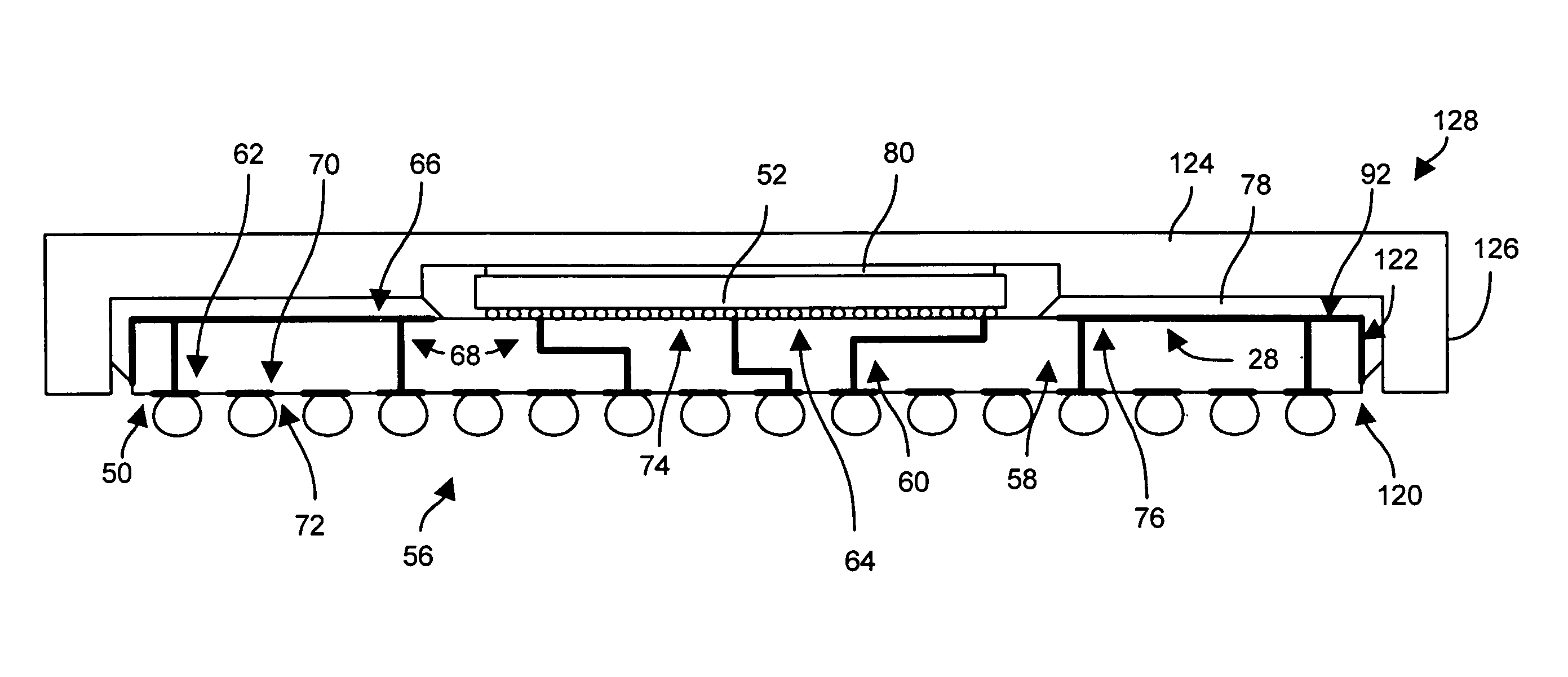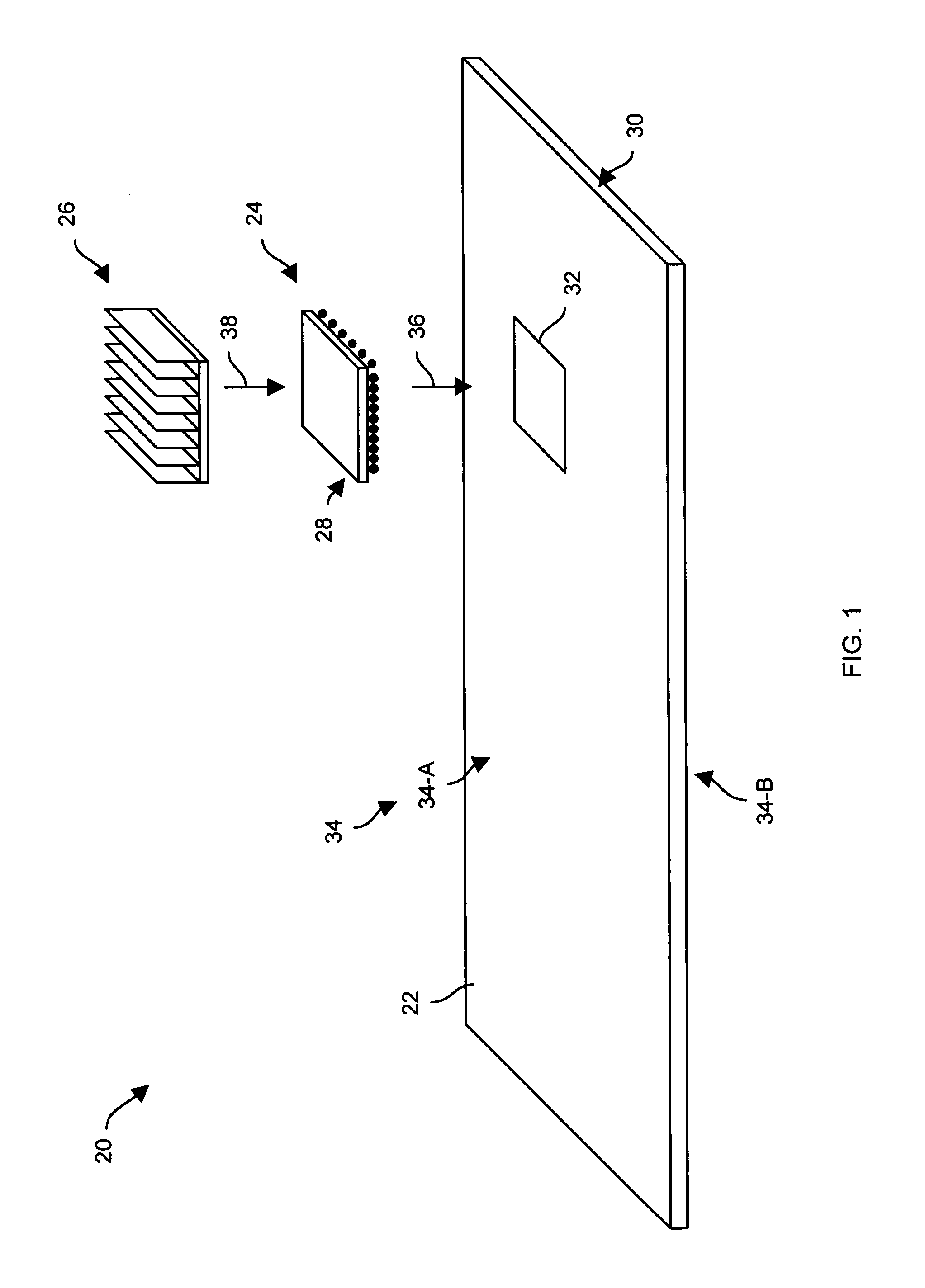Techniques for providing EMI shielding within a circuit board component
a technology of circuit board and component, applied in the direction of magnetic/electric field screening, electrical apparatus contruction details, printed circuit non-printed electric components association, etc., can solve the problems of clip typically requiring additional space around the device package, clip consuming circuit board space, ground connection not, etc., to minimize the escape of electromagnetic interface
- Summary
- Abstract
- Description
- Claims
- Application Information
AI Technical Summary
Benefits of technology
Problems solved by technology
Method used
Image
Examples
Embodiment Construction
[0019]Embodiments of the invention are directed to electromagnetic interference (EMI) shielding techniques which utilize conductive material which is disposed around a circuit board component die but within the component itself. Such conductive material in combination with a heat spreader of the component is capable of forming an EMI shield internally within the component itself when connected to a ground reference of a circuit board through a circuit board interface of the component to block EMI which radiates from the die during operation. Accordingly, there is no need for external metallic clips to ground a heat sink and the heat spreader as in conventional EMI barrier approaches. Rather, the circuit board space around the device, which would otherwise be used by the metallic clips, is now available for use by other circuit board structures (e.g., signal traces, other circuit board components, etc.).
[0020]FIG. 1 shows an exploded view of a circuit board module (or motherboard) 20...
PUM
 Login to View More
Login to View More Abstract
Description
Claims
Application Information
 Login to View More
Login to View More - R&D
- Intellectual Property
- Life Sciences
- Materials
- Tech Scout
- Unparalleled Data Quality
- Higher Quality Content
- 60% Fewer Hallucinations
Browse by: Latest US Patents, China's latest patents, Technical Efficacy Thesaurus, Application Domain, Technology Topic, Popular Technical Reports.
© 2025 PatSnap. All rights reserved.Legal|Privacy policy|Modern Slavery Act Transparency Statement|Sitemap|About US| Contact US: help@patsnap.com



